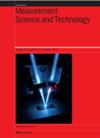TSMDA:采用两级多源域适应的滚动轴承智能故障诊断技术
IF 2.7
3区 工程技术
Q1 ENGINEERING, MULTIDISCIPLINARY
引用次数: 0
摘要
故障诊断在确保机械安全运行方面发挥着至关重要的作用。多源域适应(DA)利用源域中丰富的故障知识来提高未标记目标域的诊断性能。然而,大多数现有方法只对齐边际分布,忽略了类间关系,导致在多变的工作条件和小样本下性能下降。为了克服这些局限性,有人提出了用于轴承故障诊断的两阶段多源域自适应(TSMDA)方法。具体来说,小波包分解用于分析信号中的故障信息。对于小样本数据集,则使用扩散来增强数据集,并作为源域。然后,提取多尺度特征,并计算互信息以防止负传递。DA分为两个阶段。首先,使用多核最大均值差异对齐多源域和目标域的边际分布。其次,根据计算出的伪标签将目标域分割成子域。通过最小化样本到非对应域中心的距离来对齐条件分布。通过在两个公共数据集和一个实验数据集上进行大量实验,验证了所提方法的有效性。结果表明,TSMDA 具有较高且稳定的诊断性能,为实际故障诊断提供了一种有效的方法。本文章由计算机程序翻译,如有差异,请以英文原文为准。
TSMDA: intelligent fault diagnosis of rolling bearing with two stage multi-source domain adaptation
Fault diagnosis plays a critical role in ensuring the safe operation of machinery. Multi-source domain adaptation (DA) leverages rich fault knowledge from source domains to enhance diagnostic performance on unlabeled target domains. However, most existing methods only align marginal distributions, neglecting inter-class relationships, which results in decreased performance under variable working conditions and small samples. To overcome these limitations, two stage multi-source domain adaptation (TSMDA) has been proposed for bearing fault diagnosis. Specifically, wavelet packet decomposition is applied to analyze fault information from signals. For small sample datasets, Diffusion is used to augment the dataset and serve as the source domain. Next, multi-scale features are extracted, and mutual information is computed to prevent the negative transfer. DA is divided into two stages. Firstly, multikernel maximum mean discrepancy is used to align the marginal distributions of the multi-source and target domains. Secondly, the target domain is split into subdomains based on the calculated pseudo-labels. Conditional distributions are aligned by minimizing the distance from samples to the center of the non-corresponding domain. The effectiveness of the proposed method is verified by extensive experiments on two public datasets and one experimental dataset. The results demonstrate that TSMDA has high and stable diagnostic performance and provides an effective method for practical fault diagnosis.
求助全文
通过发布文献求助,成功后即可免费获取论文全文。
去求助
来源期刊

Measurement Science and Technology
工程技术-工程:综合
CiteScore
4.30
自引率
16.70%
发文量
656
审稿时长
4.9 months
期刊介绍:
Measurement Science and Technology publishes articles on new measurement techniques and associated instrumentation. Papers that describe experiments must represent an advance in measurement science or measurement technique rather than the application of established experimental technique. Bearing in mind the multidisciplinary nature of the journal, authors must provide an introduction to their work that makes clear the novelty, significance, broader relevance of their work in a measurement context and relevance to the readership of Measurement Science and Technology. All submitted articles should contain consideration of the uncertainty, precision and/or accuracy of the measurements presented.
Subject coverage includes the theory, practice and application of measurement in physics, chemistry, engineering and the environmental and life sciences from inception to commercial exploitation. Publications in the journal should emphasize the novelty of reported methods, characterize them and demonstrate their performance using examples or applications.
 求助内容:
求助内容: 应助结果提醒方式:
应助结果提醒方式:


